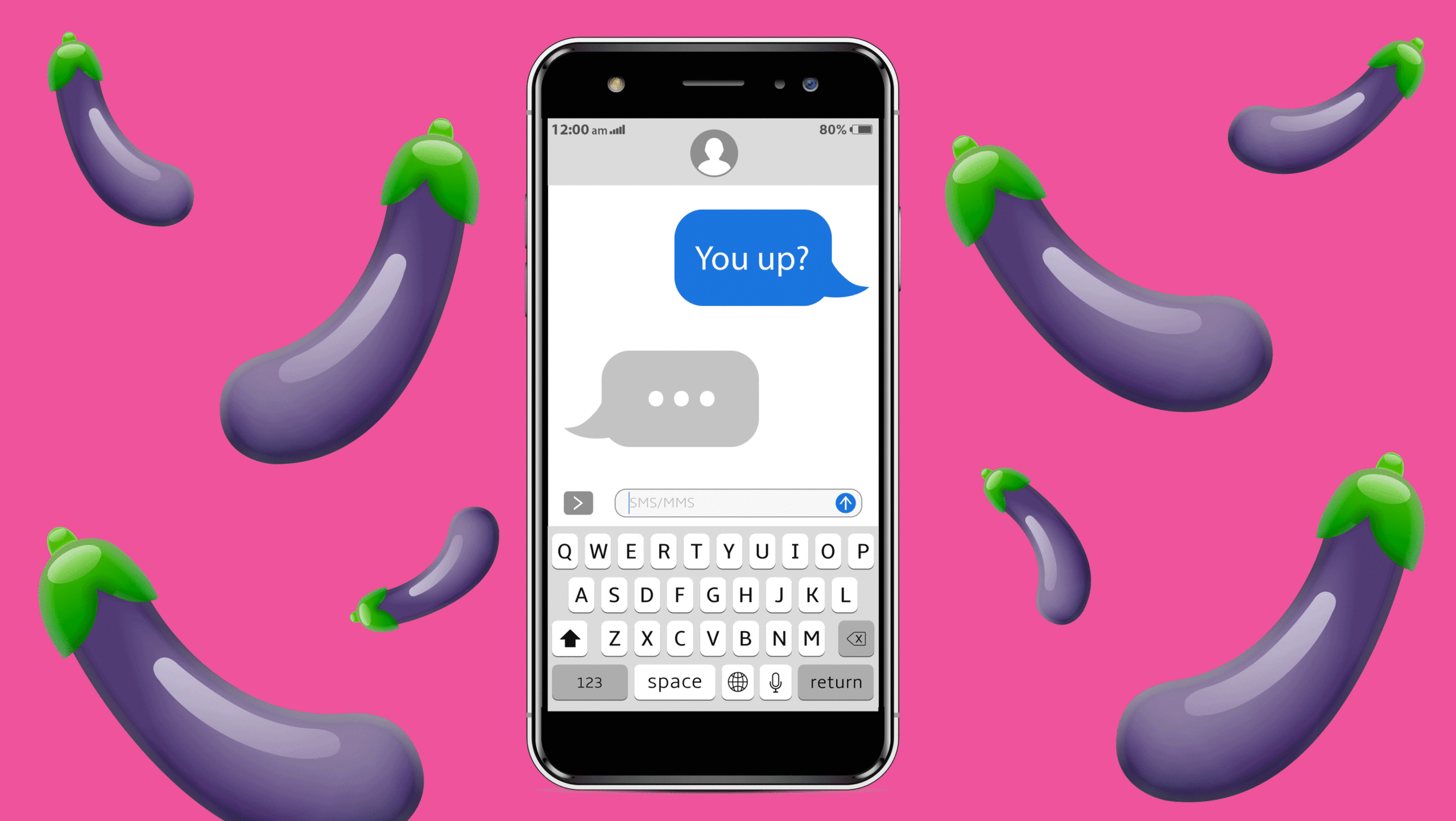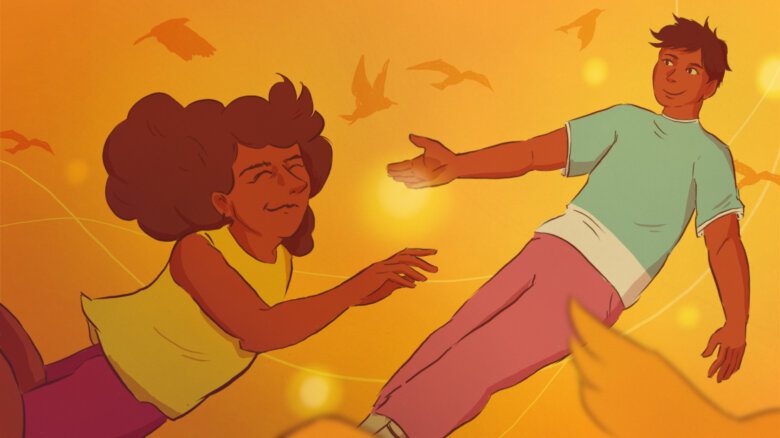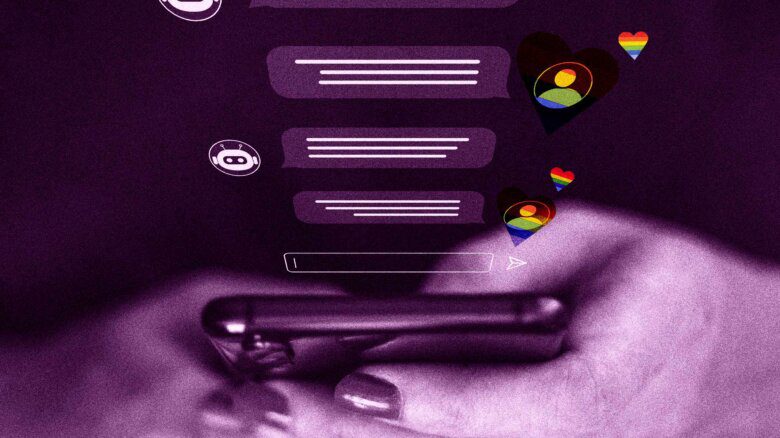Editor’s Note: Xtra’s publisher, Pink Triangle Press, owns Squirt.org and the dating app GuySpy.
I’m in Brooklyn for work, and between sips of my morning coffee, I juggle conversations with half a dozen men. While I peruse a young couple’s nudes, another guy shares that he lives just around the corner from my hotel.
It’s not all positive interactions, though: I use a shot of my bare chest (unaffectionately deemed a “headless torso”) on my profile, and when some men see that I’m Asian, they immediately block me. I’ve learned to grow a thick skin; even when it’s personal, you can’t take it personally. This is the game of Grindr.
I’m a queer millennial, and Grindr has been part of my adult life for longer than it hasn’t. Turning 10 this week, the app has played a monumental role in the gay male cultural story, with millions of users and a valuation of nearly half a billion US dollars.
Grindr can feel so personal — like having a portable gaydar for nearby available men in the palm of your hands — and yet also so commonplace that reflecting on it feels like musing about, say, the spatula. (Of course, Grindr isn’t exactly an ordinary object; just this week, Beijing Kunlun Tech announced it would sell the app after a US government national security panel raised concerns that it could be used for foreign surveillance.)
This is Grindr’s legacy: it has fundamentally changed the way we connect — not just its users, but anyone who dates. The app was the proving grounds for a combination of geolocation, dating and a gamelike design. We see that combination in Tinder alerts that tell you how many likes you received in the past week, all the way to the Tamagotchi-like gameplay of dating app 9Monsters. At a 2013 talk I gave at South By Southwest exploring Grindr’s design, cofounders of a new dating app approached me after to pick my brain. I wished them luck in a competitive market. That app? Hinge. Meanwhile, Tinder kicked off an avalanche of think pieces in mainstream media about straight hookup culture — but that foundation was set by Grindr.
Using Grindr felt like having superpowers, suddenly able to see all the men seeking sex with men in the area
Grindr arrived on the App Store on March 25, 2009, just nine months after the introduction of the iPhone 3G, a revolution in its own right (Android users had to wait until 2011 for their version). The iPhone 3G included GPS, which not only powered apps that help us never feel lost, like Google Maps, but also geolocative apps, like Foursquare. Dating sites long predated Grindr, but the magic of the app was that it sorted users by location, providing an immediacy that early dating sites like OKCupid or Manhunt couldn’t match.
Researcher Artemio Ramirez Jr found that, in the early days of online dating, the optimal time for meeting after first exchanging messages was three weeks; after six weeks, forget it. Why? Because that’s enough time for daters to build up idealized versions of one another and end up with unrealistic expectations.
With Grindr, co-founder Joel Simkhai felt the ability to meet quickly would take away those mounting expectations. When I spoke to him for my book Meet Grindr, he said: “With Grindr, you go on and there’s hundreds of other people within walking distance. So I hope it liberates you from the obsession of [thoughts like] ‘what’s wrong with me?’ or ‘why didn’t that go well?’ or ‘I need to be perfect.’” You could know within hours (or minutes) if there was a connection — and you could act on the connection almost immediately. “And if you meet him and it doesn’t work out,” Simkhai says, “there are so many more [men].”
Using Grindr felt like having superpowers, suddenly able to see all the men seeking sex with men in the area. You didn’t have to cruise through glances or other coded signals. If you wondered if someone was family, you could just check on Grindr. It felt risky, taking cruising out of bathhouses and parks and out into the open, anywhere a data or WiFi signal could reach.
And the political climate Grindr was born into only made matters more difficult. The crushing loss from California’s same-sex marriage legislation Prop 8 in November 2008 still resonated around the world, and LGBTQ2 communities deflated as then Democratic presidential candidates Hillary Clinton and Barack Obama carefully chose words to support marriage as between a man and a woman. And in Canada, Stephen Harper’s Conservatives had yet to support same-sex marriage.
Cruising blurred public and private lives: if we could see everyone on the app, then they could see us. It wasn’t unusual to block coworkers, bosses and friends — anyone who we weren’t ready to see that side of ourselves. And that side wasn’t always recognizable to those who knew us off Grindr; sometimes it wasn’t even recognizable to ourselves. We were brisker, flakier and even more discriminatory on the app. We were shaped by the limitations of Grindr.
The early versions of the app allowed for very little context. In keeping with moving users to meet as quickly as possible, profiles consisted of a profile picture, a headline, statistics like weight and height and a meagre 120-character bio. Given a grid of dozens and dozens of profiles, users adapted by being picky and brutish in their interactions: men felt interchangeable. Why did it matter how you treated them when another 50 are around the corner?
All that mattered on Grindr was how you looked. While it didn’t invent the hierarchical discrimination in gay male culture, it absolutely exacerbated it. Users flatly posted what they did and did not want, including the infamously terrible “no fats, no femmes, no Asians.” No one was surprised when Grindr began to receive negative news coverage; a Vanity Fair contributor once dubbed it the World’s Biggest, Scariest Gay Bar.
And yet users kept returning — in part, because finding sex can be thrilling. But design also played a role. Grindr has many elements resembling a slot machine. With each new location there are new users to chat with, and because Grindr is asynchronous, users don’t know when they’ll get messaged. Sometimes they’ll be rewarded with nudes and a meet up; sometimes they’ll get ignored or ghosted.
That random generation of highs and lows is an effective hook for people, and drives the engagement engines of platforms like Twitter and Instagram, too. It’s what psychologists call variable ratio reinforcement: at any given minute, users on these platforms receive validation in the forms of likes, comments and retweets, but because we don’t know when, we have to keep playing.
The driving forces of modern dating apps heighten not just the possibility of connection but also the fear of missing out. With increasing availability and convenience, the unspoken threat is that the only thing stopping you from finding someone is yourself. Even in hookup culture, these apps remind you that by not being with someone — preferably found through the app — you’re not fulfilling your potential. What’s most important isn’t necessarily the time users are on the app, but that they are itching to be on it when they’re not.
Now that everyone can meet and anyone can hook up, we have a new need: remembering who we are when we are alone, and not performing for a digital audience
Even before Twitter, Instagram and Slack came along, Grindr helped push us into an “always on” culture. You aren’t just on at work anymore: being always on means also sharing memes on Twitter, posting selfies on Instagram, catching up with family members on Facebook and flirting on Grindr. The constant notifications are inspiring books like Irresistible and Digital Minimalism, which ask us to reflect on the impact of technology on our lives. An important subset of that is questioning what it means for users to always be potentially looking, including increasing concern about the toll it has on mental health. In fact, one gay psychiatrist who studied the use of Grindr found that the constant use of these apps can wade into addictive behaviour.
We adopt technology because it fills a need at the time, and once we acclimate to it, new needs spring up — and new technology comes along to fulfill them. As someone who once owned a Discman portable CD player, it still sometimes take me aback that now I hold in my hands a device where I can stream almost any music I want, not to mention watch films, chat with friends and write this piece.
Being able to meet anyone anywhere at any time pushed us to break down existing dating norms. I hear from friends, both queer and not, about how hectic and unhappy their dating lives are. I even hear it from non-friends: an exasperated waitress recently told me about how she is dating a guy on-and-off dating, if they can even call it dating.
Before apps like Grindr, meeting was tough. Problem solved. But now that everyone can meet and anyone can hook up, we have a new need: remembering who we are when we are alone, and not performing for a digital audience that is constantly reachable. Interestingly, the next big wave for apps are based on mindfulness: we realize that the relationship we need to develop is the one with ourselves.
Back in Brooklyn, I set up a date through Grindr with a lawyer who shares my appreciation for dive bars. I tell him he has a great smile, and we realize that we’ve both had braces. I wonder if we’d have started talking if we had both been in the same café or passed each other on the street. I wonder if I’d have even noticed him with my head down, looking at my phone.


 Why you can trust Xtra
Why you can trust Xtra


